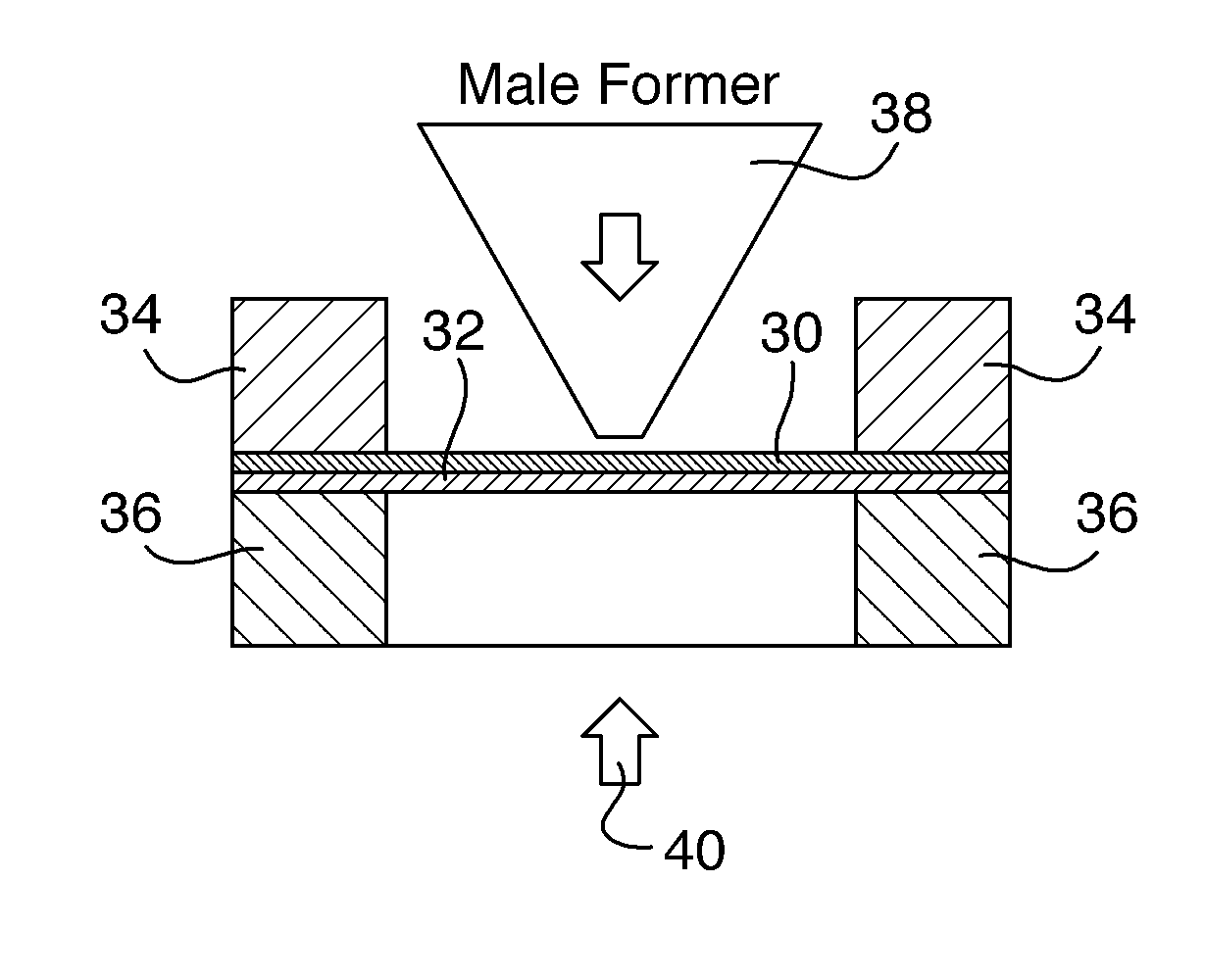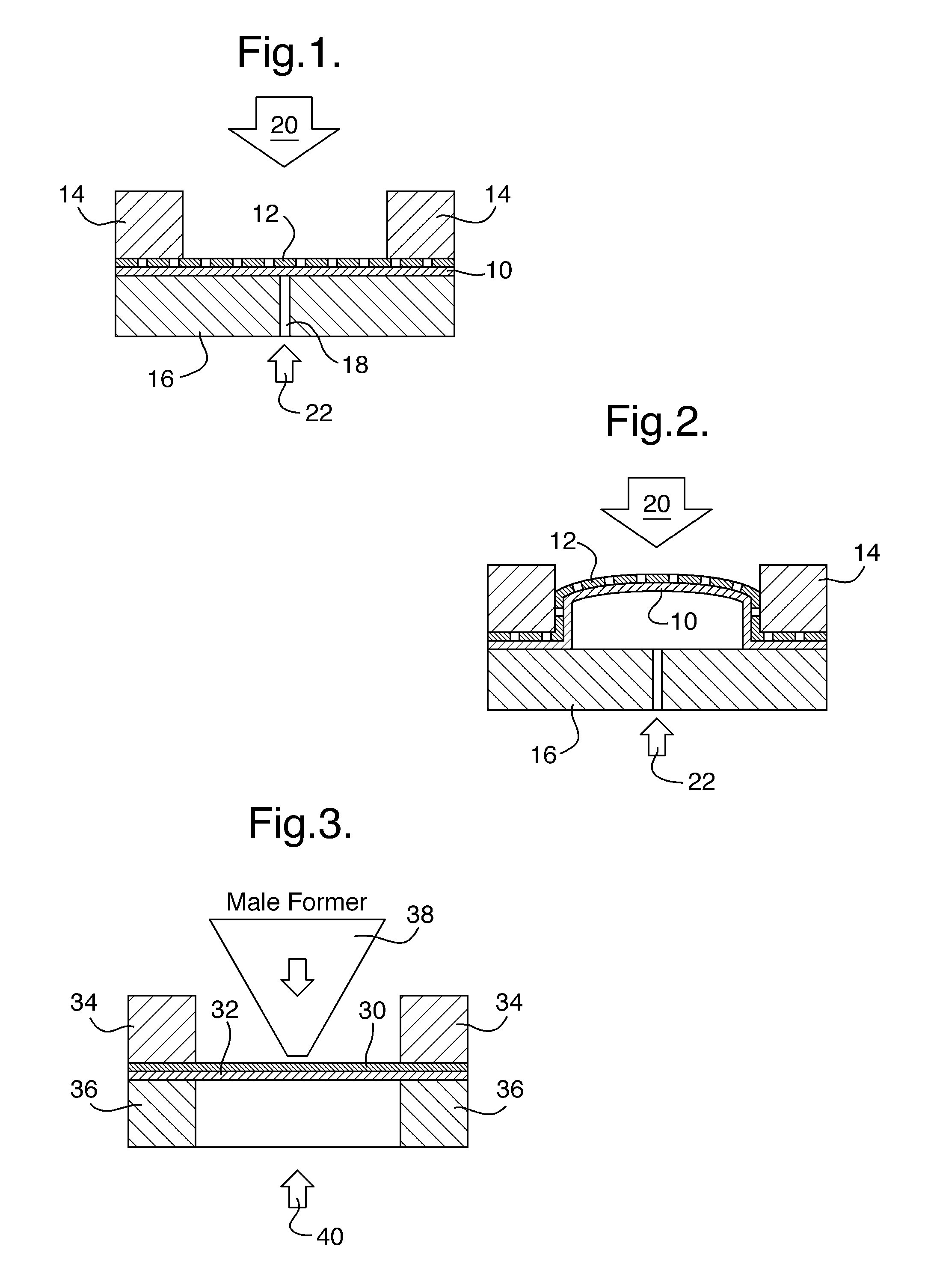Process for producing infusion packets
- Summary
- Abstract
- Description
- Claims
- Application Information
AI Technical Summary
Benefits of technology
Problems solved by technology
Method used
Image
Examples
Example
[0037]Turning to the figures, FIG. 1 shows a separable laminate comprising an elastomeric membrane 10 and a woven polyethylene terephthalate sheet 12, having an average thickness of 50 micrometres.
[0038]The separable laminate is clamped by clamps 14 to a base 16 which has a channel 18 passing through to the laminate.
[0039]Air heated to 190° C. is blown onto the surface of the woven sheet 12 in the direction of arrow 20 to raise it to a thermoformable temperature. At the same time thermoforming air is blown through channel 18 in the direction of arrow 22.
[0040]As the membrane can deform elastically and the woven sheet is at a thermoformable temperature, the laminate deforms to take the shape shown in FIG. 2.
[0041]Once the desired shape is obtained, the hot air stream 20 is stopped so that the woven material drops below its thermoformable temperature and gas supply 22 is also stopped, to form the three-dimensional material shown in FIG. 2.
[0042]FIG. 3 shows another separable laminate ...
PUM
| Property | Measurement | Unit |
|---|---|---|
| Temperature | aaaaa | aaaaa |
| Temperature | aaaaa | aaaaa |
| Thickness | aaaaa | aaaaa |
Abstract
Description
Claims
Application Information
 Login to View More
Login to View More - R&D
- Intellectual Property
- Life Sciences
- Materials
- Tech Scout
- Unparalleled Data Quality
- Higher Quality Content
- 60% Fewer Hallucinations
Browse by: Latest US Patents, China's latest patents, Technical Efficacy Thesaurus, Application Domain, Technology Topic, Popular Technical Reports.
© 2025 PatSnap. All rights reserved.Legal|Privacy policy|Modern Slavery Act Transparency Statement|Sitemap|About US| Contact US: help@patsnap.com


